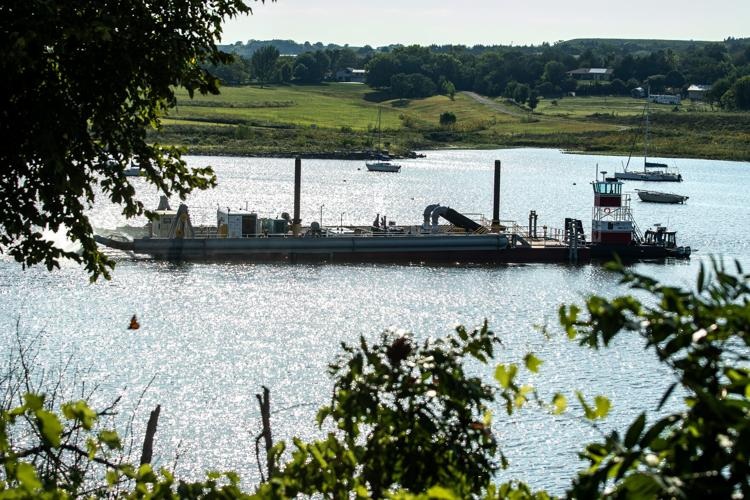A first-of-its-kind dredging project at Tuttle Creek Reservoir was completed just before the federal government shutdown took effect. But it could be some time before federal and state engineers know how effective the process has been in removing decades of sediment buildup.
The U.S. Army Corps of Engineers and the Kansas Water Office completed the 10-day water injection dredging demonstration for the fall period Sept. 27 to avoid the impacts of the government shutdown that began Oct. 1. A second and third round of dredging is planned for spring and summer 2026. Michels Construction of Brownsville, Wisconsin, was awarded the $7.8 million contract for the project in December 2024.
As the government shutdown enters its third week, some non-essential work in the Corps of Engineers is inactive. According to its website, USACE has closed its regulatory agencies and stopped permit processing, although essential activities such as national security and protection of life and property will continue under certain conditions. It is expected to furlough 1,119 of its 36,610 employees.
KMAN and The Mercury reached out to USACE Kansas City District Project Manager and Planner Laura Totten on Oct. 8 for a status update on last month's project. Totten said the corps' activities are limited and interviews cannot be granted until Congress approves a continuing resolution because federal funding is no longer available.
During a radio appearance last month on KMAN's Within Reason with Mike Matson, Totten explained that Tuttle Creek Lake is about half-filled with sediment from the originally constructed storage facility in the multi-use basin.
The dredging process uses a large barge equipped with a pipe that injects water into the sediment at the bottom of the lake, lifting it into suspension and creating a “density current.”
“The hope is that the sediment will then flow out of these lower gates into the river downstream,” Totten said. “We believe it will remain suspended and continue to flow downstream, out of the Big Blue River, into the Kansas, into the Missouri, into the Mississippi to the Gulf (of America). But we are watching this downstream to see exactly what happens to the fate of this sediment.”
source
